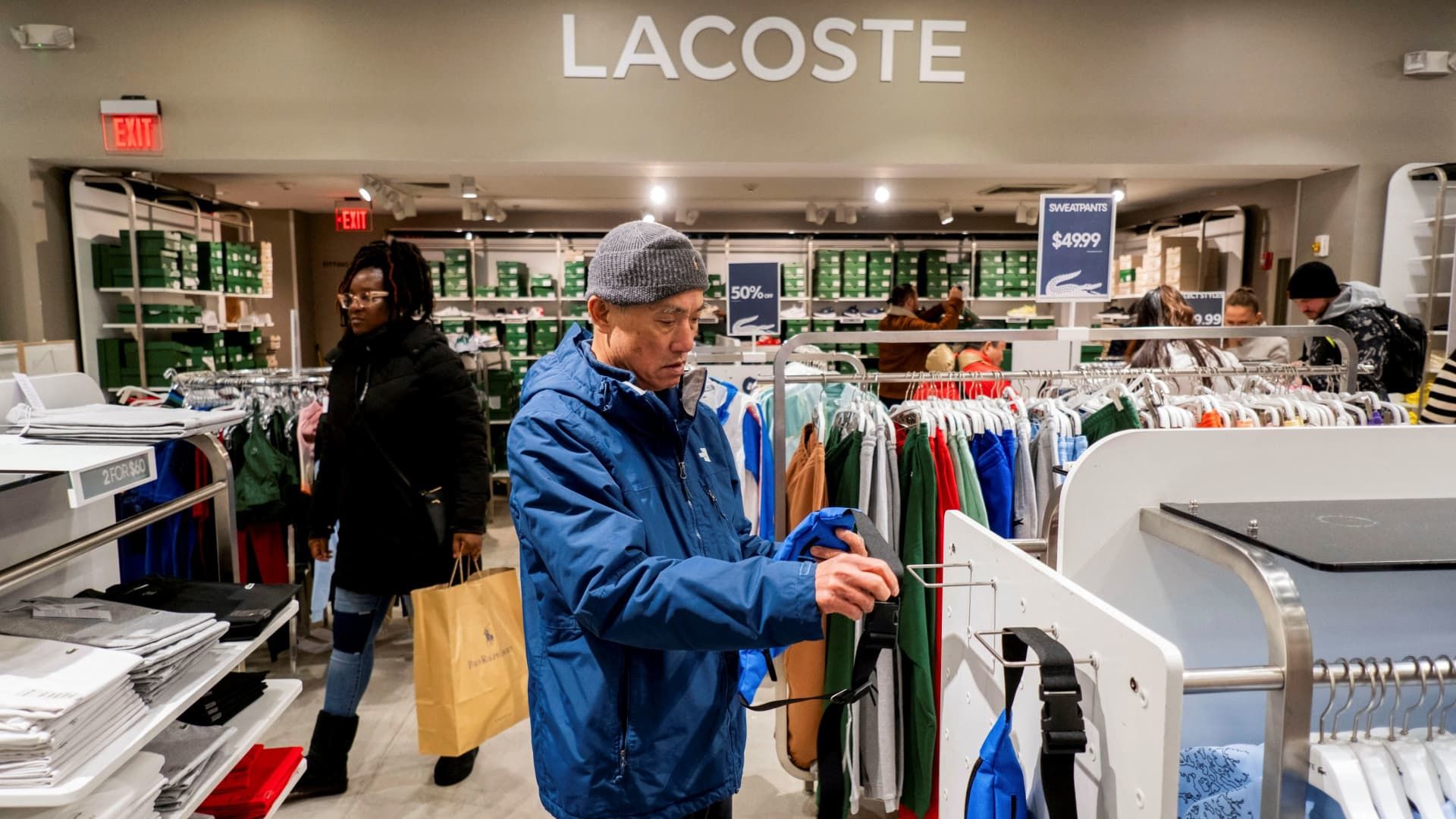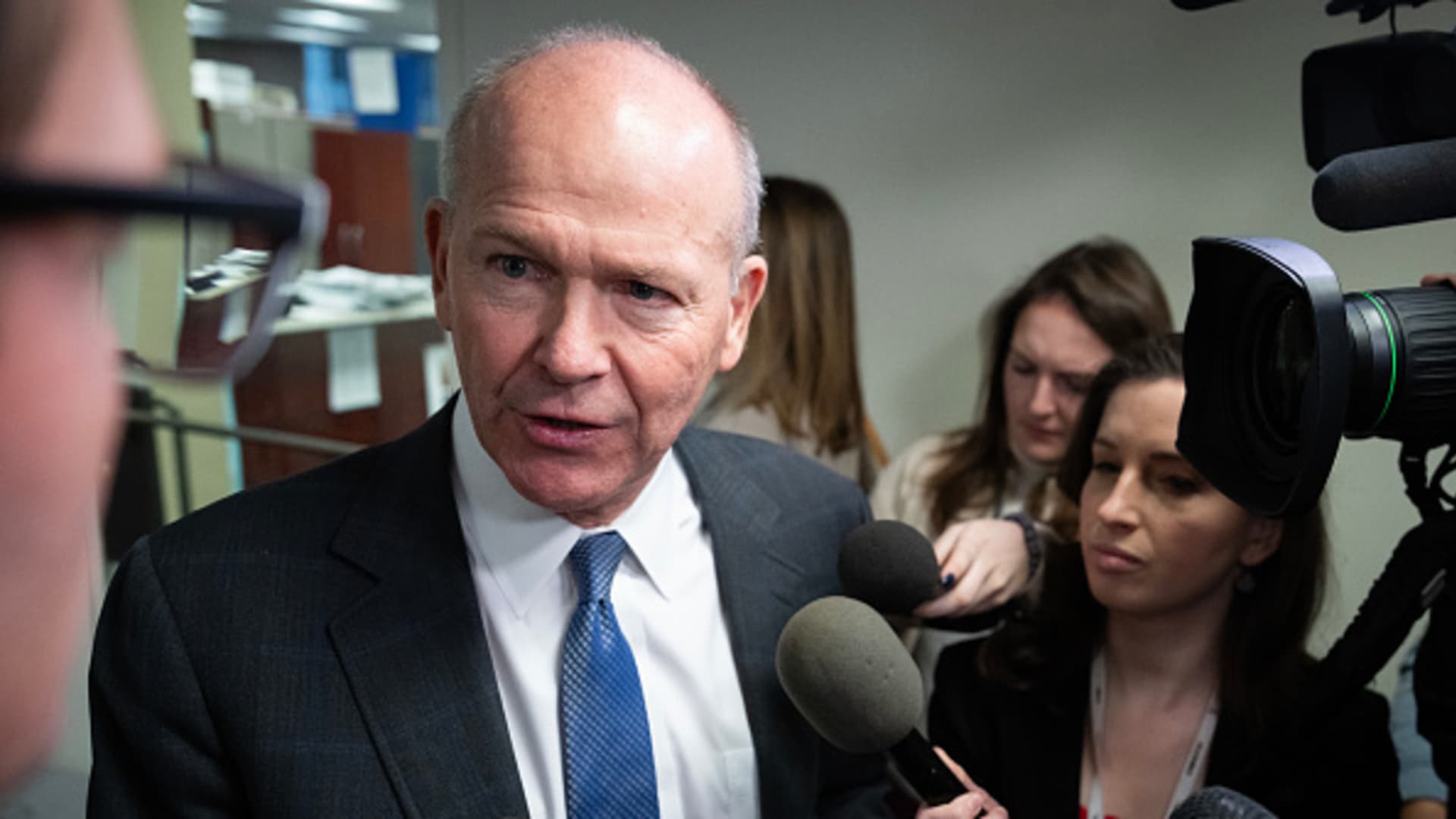A person chooses clothes in a Lacoste store as retailers compete to attract shoppers and try to maintain margins on Black Friday, one of the busiest shopping days of the year, at Woodbury Common Premium Outlets in Central Valley, New York, on November. , 2023.
Vicente Albán | Reuters
Holiday sales rose 3.8% year over year to $964.4 billion, according to the National Retail Federation, as consumers spent on gifts and celebrations even after enduring a prolonged period of higher prices.
The tallied results, released by the NRF on Wednesday and based on retail sales data from the Commerce Department, were roughly in line with the major trade group's expectations. Total holiday sales were not adjusted for inflation and included both in-store and online purchases.
Before the holiday season, NRF had predicted that sales in November and December would increase 3% to 4% year over year until between $957.3 billion and $966.6 billion in spending. The holiday forecast and total exclude sales at car dealerships, gas stations and restaurants.
The results echo the findings of the CNBC/NRF Retail Monitor, which showed that holiday shoppers closed the year on a positive note. In the two key months of the season, November and December, the Retail Monitor rose 3.7% and core retail gained 3.3% year over year, excluding cars and gasoline.
NRF Chief Economist Jack Kleinhenz said lower inflation and a strong labor market helped prop up holiday shopping.
“Consumer spending was remarkably resilient throughout 2023 and ended the year on solid pace for the holiday season,” he said in a news release.
Almost all retail categories posted year-over-year gains. Electronics and appliance stores and health and personal care stores led the way with sales increases of 9.3% and 9%, respectively. Online sales and other non-store sales increased 8.2% year over year.
On the other hand, sales at sporting goods stores remained practically stable and sales at construction materials and gardening supply stores fell 3.9%. Sales at furniture and home goods stores decreased 6.2%.
Despite the strong peak season, economists and retailers are weighing whether consumer resilience will continue into 2024. The new year brings dynamics that could boost or slow spending, such as a divisive presidential election cycle, a cooling of inflation and the Federal Reserve's decision on whether and when to cut interest rates. Retailers are also facing supply chain disruptions in the Red Sea that have raised the risk of higher energy and shipping costs.
Retailers will start earnings season in February, but Abercrombie & Fitch, lululemon, American Eagle Outfitters and some others have already improved their prospects based on better-than-expected holiday sales.
Trends during the key season reflected a reversion to more typical pre-pandemic levels. Average sales growth during the holiday season was 3.6% from 2010 to 2019, according to NRF data. Those year-over-year profits soared during the Covid-19 pandemic, as sales increased 9.3% in 2020 and 13.5% in 2021.
Don't miss these CNBC PRO stories:










